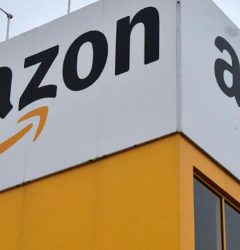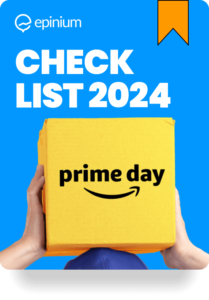In today’s blog post, we will be talking about what things not to do when running a campaign and we will give you the right tips about how to set up an Amazon PPC Campaign.
The first time you give to your Amazon PPC campaign a go can be really exciting since (if done correctly) you will be seeing your ad campaign generate clicks and leads while your sales numbers increase.
However, after launching your first few ad campaigns, you might realize that some aren’t performing as well as you’d thought they would.
Don’t get discouraged nor stressed since there might just be a couple things you didn’t know you’re doing wrong.
How to set up an Amazon PPC campaign
Let’s start with the Don’ts:
1. Having continuous low Target Average Cost of Sale
ACoS is Amazon’s metric for knowing profitability versus visibility. It is obtained by dividing the total ad cost by total sales. Hence, when you have low ACoS, therefore, means you have high profitability.
Nevertheless, ACoS is just a percentage value. You could actually be getting a low ACoS and, technically be very profitable; but in fact, your earnings might not be that high.
Also, the second campaign is created to generate earning than the first campaign. Since it will have a higher ad budget, the product will likely obtain more visibility and may even sell more.
2. Using high-converting keywords with low- or non-converting keywords
Placing all your keywords in one bucket, regardless of their respective conversion rates, can consume your ad budget without giving you a considerable ROI. This can happen when keywords do not convert and still get many clicks comprise the majority of your keyword list.
Ideally, an organized keyword group will help you reach audiences that fit that profile. If you put all your keywords into one campaign, you could also be targeting Amazon shoppers who don’t actually fit your ideal client profile. This will simply result in having a part of your ad budget going to clicks that don’t generate sales.
Here is what you can do not to fall into those common mistakes.
Monitor your conversion tracking. Remove keywords that have not converted to sales for the last three months and add them to your negative keywords. You can create a minimum of two ad campaigns for a product: one with your top 10-20% converting keywords which will be your “winning” campaign, and another for the remaining 70-80%. Although you need to be flexible with your ad budget, the optimal strategy is to allocate more to your top converting keywords.
3. Having the average daily budget higher than your actual daily ad spend
When you start to create an ad campaign, Amazon will ask for an average daily budget. The amount of money you bid tells Amazon how much of your money it can spend every day. Many see it as a safe thing to do,since Amazon will simply stop running your ads when you’ve reached your daily limit.
However, what Amazon is really doing is treating the average daily budget as, “the average amount you are willing to spend per day over a calendar month.” This basically means that there could be days when you’re spending way below your daily average and days when you spending over it. What matters is that at the end of the month, the average matches the amount you gave to Amazon.
4. Using arbitrary labels for campaigns and ad groups
This one is a simple organizational matter, but one that can make a huge difference in your overall efficiency and campaign tracking methods.
If labels are not organize, things could get confusing, messy and time-consuming. In this case, you could, for example, overlook campaigns that require more frequent monitoring, spend ten or more minutes just looking for the a/b ad test you ran for a certain campaign, or maybe just accidentally run a second ad for the same keyword group.
Here’s an example to be followed:
Naming structure for an ad campaign for Soft Bio conditioners
- Campaign name: Soft Conditioner
- Ad group 1: Bio soft conditioner A
- Ad group 2: Bio soft conditioner B
- Ad Test 1: Bio soft conditioner – test 1
- Ad Test 2: Bio soft conditioner – test 2
5. Betting all budget on expensive keywords
Keywords with high search volumes and consumer demand tend to come with a strong CPC (cost per click). Logic says that if you want your product to be displayed before shoppers, you bid on these keywords.
However, putting all of your eggs in your entire bucket of expensive keywords can be catastrophic. As discussed before, having a high ACoS does not need to be bad; but, when you’re not getting any significant returns, spending so much on expensive keywords isn’t worth it.Remember, your ultimate goal is to convert, not just to earn ad clicks and drive traffic to your product pages.
At this point, you should lower your bid if your expensive keywords keep getting clicks but don’t actually generate sales. If a month goes by without relevant results, stop the campaign.
Start performing another keyword research and add long-tails or set your bid amount according to its performance.
6. Bad campaign structure
The right planning and a correct execution are crucial for ad campaigns to generate impressions, conversions and ultimately, sales. You do not need to be an expert when starting to advertise on Amazon; most advertisers learn through out the way of running the campaigns.
However, you can save a lot of money by learning to fundamentals of Amazon ad campaigns before starting.
Similar to Amazon, you could now start with Automatic campaigns even if you’ve done initial keyword research to start “test campaigns.” After about a month, simply collect the highest 20 converting keywords, copy them in a manual campaign and set the keyword targeting to exact match.
7. Having bad-quality products
Your honesty as a seller is at risk when you sell products that don’t actually deserve their price tags. In the world of e-commerce, reputation is everything. A consensus that you’re not giving your customers good exchange for their money is just as much of an obstruction to buyers as an overpriced product.
Customers simply buy the better product with the best features, and it will be hard to convince them otherwise if yours is worse compared to other sellers’ listings.
A greatly planned ad campaign can only do so much for your business. They will drive traffic to your product pages.However, it’s the quality and story you are telling or selling that ultimately converts people from viewers to buyers of your product.
Here are three tips to implement to increase the quality of your products.
- First, look for high-quality products you’d be willing to pay a good amount of money for.
- Second, do some up or cross selling for a reasonable price increase ($40 box set of makeup powder, skin oil bottles, and accessories is a better deal buying all items separately at a higher total price) or just some gift that you can afford to give away.
- Third, include a note and supporting images in your product page so you can set your customers’ expectations.
8. Never optimizing product titles
Amazon’s organic search results usually show up to 140 characters for product titles. Ads that show on the right side of the page on desktop view can display up to 30 characters. On mobile view, search results can have around 60 characters.
Titles that exceed the pixel limits get cut. Such rule applies to both organic and paid search results. A9, Amazon’s organic search ranking algorithm, links search relevance to words that display first on the title.
If your keywords are at the tail end and are cut off, it may harm your ad campaign.
We suggest you put the most important keywords at the beginning of your product titles. When it comes to title optimization best things to take into account are the brand, product line or type, material, key features, color, size, and quantity. Last, but not least, place all other relevant keywords that don’t fit into the title slot in the back-end or hidden search terms.
Learn & Optimize your Amazon PPC Campaigns with Epinium
Start your Free Trial






